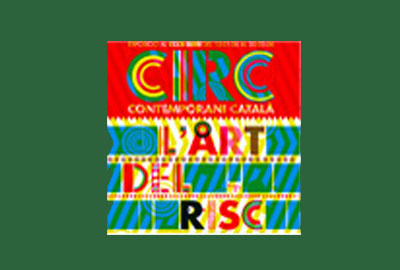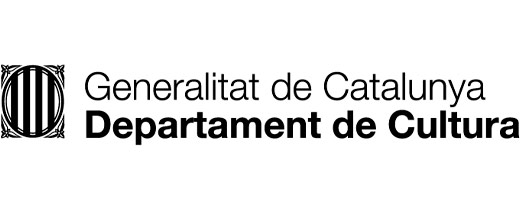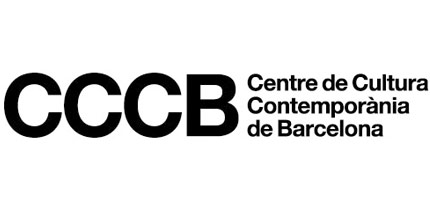Exhibition
The art of risk
Contemporary catalan circus
This exhibition takes a look at the artists and shows that, in the last 30 years, have contributed to making the new Catalan circus a rich creative phenomenon.
Curators: Jordi Jané, Joan Maria Minguet Batllori
SOCIAL REVOLT, CELEBRATION AND PERFORMING RISK
In Catalonia, the end of Franco's dictatorship allowed a long-repressed thirst for freedom to break out. Life and celebration came out on the street and stage professionals achieved landmarks like the Grec '76, the Saló Diana, the Jornades Llibertàries and the Tenorio in the Born. When the military gaoled Els Joglars, the campaign for freedom of expression strengthened the bonds between art and society even more. Tumblers, actors, musicians,magicians, fakirs and puppeteers were free to live, thrill, experiment and create as they pleased. Two groups led the way towards aesthetic renewal: Els Joglars, who despite their background in classical mime eventually subverted it, and Comediants, with a poetic of retrieving Catalan tradition and folklore and reorienting it towards the ancestral art and mischief of the circus.
Section 2
ANOTHER CIRCUS IS BORN
A new generation of actors burst onto the Catalan stage. Many of them came from the independent theatre and reached out to other performing arts. In 1976, the group La Tràgica opened with Trípijoc Joc Trip , a show that was clearly in the spirit of the circus. In 1978, Claret Papiol and Jaume Mateu created the pair of clowns known as Germans Poltrona (Poltrona Brothers). Soon afterwards, Jaume Mateu, 'Tortell Poltrona', led the Circ Cric, an unusual adventure in which the country's young artists struggled to make it as clowns, musicians, jugglers, acrobats, horse-riders or stilt-walkers, and which in 1981 began to tour with its big top to the delight of the public and of pioneering writers and artists. The adventure was short-lived but it left a lasting imprint in the artistic terrain and in the country's collective imagination. A first try, a primeval seed which would eventually bear splendid fruits a few years later.
Section 3
THE ROOTS OF RENEWAL
Contemporary Catalan circus is founded as much on the example set by the great names of classical circus as on the influence of a handful of foreign companies who helped transform the language of the theatre and, at the same time, overturned other scenic languages, including the language of the circus. On one hand, the weight of tradition was taken into account; on the other, contact was sought with other art forms so as to put it on its head. Gradually the necessary substrate was formed in which the contemporary circus could take root and grow: festivals, professional associations, civic bodies, magazines, centres for circus training and documentation, impresarios and artistic agents are some of the elements needed by the circus in the twenty-first century if it is to continue being a microcosm in which the human being is acknowledged and dignified.
Section 4
THE SCENE OF RISK
The new circus felt that physical risk and virtuosoship are not essential for achieving an artistic creation that communicates with the spectator directly and intensely. In a similar process, the Catalan stage arts also showed obvious signs of renewal in languages like mime, magic, puppets, visual and gestural theatre... In these disciplines, where words often play a secondary role, the new artists opted for making a conceptual leap in search of new poetic dimensions. Research, interdependence with other art forms and creative ambition presided their work. These acts also belong in the sphere of aesthetic risk.
Section 5
THE POETICS OF RISK: CONTEMPORARY CIRCUS
The current circus panorama is rich and varied. There is a high concentration of quality proposals in Catalonia's circus rings, on its stages and in its streets. This panorama offers two main aspects: the companies and the soloists. Between the two, they cover almost every circus discipline there is: balancing acts, acrobatics, juggling, trapeze acts, contortionists and, of course, the clowns. In the last thirty years, Catalonia has spawned a splendid catalogue of clowns, creators of characters who, with one eye on tradition, are capable of turning up new, fully contemporary poetic impulses.
Section 6
SYMBIOSIS BETWEEN CIRCUS AND RISK SCENE
Contemporary circus has opted for the hybrid way, provoking and defending mutual contagion and influences from other languages, be they of the performing arts or otherwise. A transversal concept of culture that is not exclusive to the circus: the idea of cross-breeding is shared by other creative artists all over the world who are more interested in the areas of overlap than in establishing a home ground and setting up borders between genres. In Catalonia, theatre people, musicians and choreographers began to incorporate circus elements into their performances and the result was a meeting of different arts, a crossroads where the circus has a big say.


